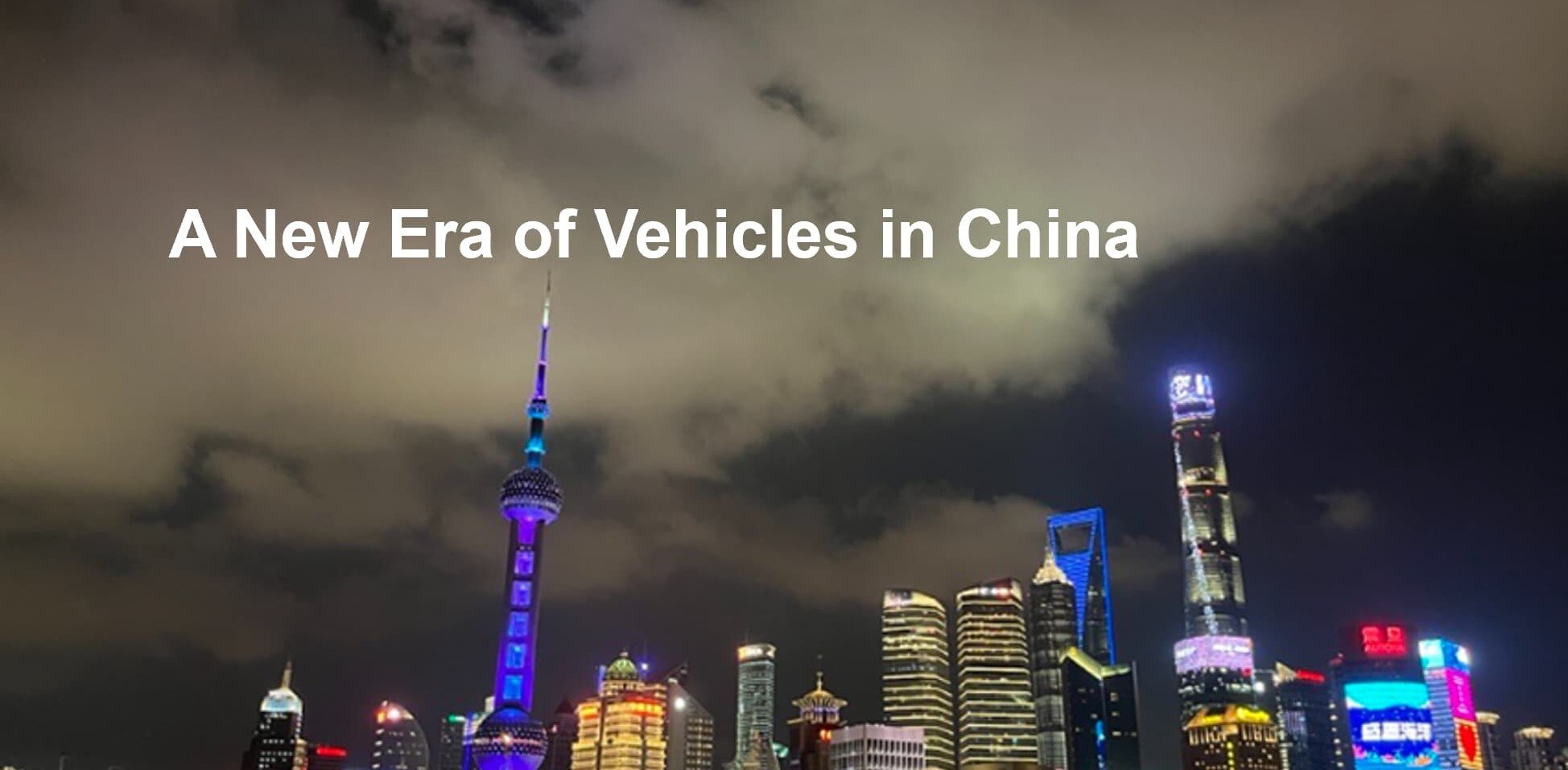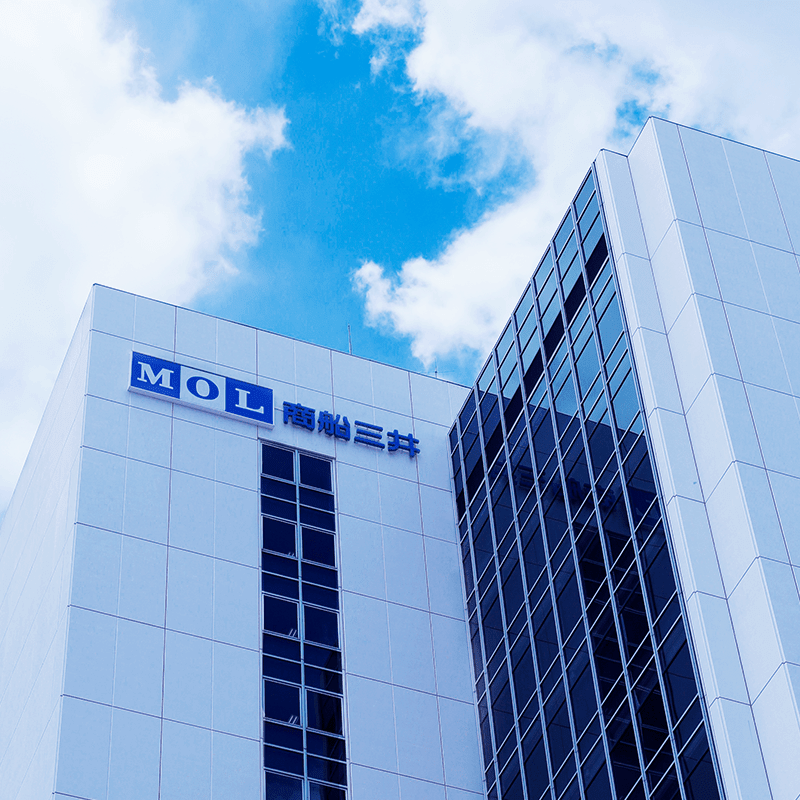BLOG
A New Era of Vehicles in China:~Rapid change in China's Automobile Export Business (Part 2)~
- General Shipping
2025.05.26
 In this blog, following the first part from 2023, we bring you the voices of our local representatives in China!
In this blog, following the first part from 2023, we bring you the voices of our local representatives in China!
You can read the previous part here.
It has been quite some time since our last update, but as previously mentioned, this blog will provide a brief overview of the current state of the Chinese automobile business and export trends.
(This article was written in March 2025.)
(Right Photo by the author, Jing'an Temple, Shanghai)
Key Points
-
By 2024, China led car exports with nearly 6 million units.
-
Government support and NEV innovation, led by BYD, drive growth.
-
Exports are growing to Russia, the Middle East, and the EU.
- Despite rising NEV sales domestically, ICE vehicles still dominate exports.
-
Challenges include economic slowdown, competition, and trade barriers.
Total Sales of Chinese Cars
As of the end of 2022, the total sales for Chinese cars was approximately 27 million units. In 2023, this number surged to 30.09 million units, and in 2024, it reached 31.4 million units, surpassing the 30 million mark due to the economic recovery trend following the COVID-19 pandemic.
.png?width=747&height=429&name=Total%20Automobile%20Sales%20in%20China%20(in%20ten%20thousand%20units%2c%20including%20exports).png)
(Data:From MarkLines)
There are multiple factors contributing to this strong performance, but the main ones are as follows:
・First, the Chinese Government, which wants to treat its own auto industry as one of the pillars of its economy, has encouraged consumers to buy and replace their cars with new ones through various subsidies and other programs.
・Chinese automakers have actively introduced new models, particularly electric vehicles (EVs).
・In addition, the automakers and Chinese Government have been strongly focusing on automobile exports.
The sales rankings by automaker for 2024 are as below. Comparing these rankings with those from 2022, which were featured in the previous blog, reveals significant changes in both the scale and positions over the past two years.
.png?width=532&height=339&name=China%20Vehicle%20Sales_Ranking%20by%20Sales%20(2024).png) (Survey by Mitsui O.S.K. Lines, including joint ventures’ and export units.
(Survey by Mitsui O.S.K. Lines, including joint ventures’ and export units.
Figures = ten thousand units)
BYD, which entered the Japanese market at the beginning of 2023, finally surpassed Shanghai Automotive, which had long held the top sales position, in 2024. Data shows that six of the top ten models in terms of sales are BYD vehicles, and nine of the top ten models in the new energy vehicle (NEV) category are BYD vehicles.
Chinese Car Exports
In 2022, the number of cars exported from China was 3.11 million units. However, in 2023, this number had increased to 4.91 million units, surpassing Japan to become the world's largest exporter of cars. In 2024, the number further increased to 5.86 million units (with some estimates suggesting 6.41 million units), showing remarkable growth.
As mentioned earlier, the Chinese government places great importance on the automotive industry and actively promotes the export of domestically produced vehicles. Although there has been a partial shift from EVs to hybrid electric vehicles (HEVs), China continues to focus on exporting NEVs, including EVs, as a culmination of domestic technology combined with autonomous driving and connected technologies.
 (Based on MarkLines data. 2024 export volume of 5.86 million units, including KD (parts for assembly) and other exports)
(Based on MarkLines data. 2024 export volume of 5.86 million units, including KD (parts for assembly) and other exports)
The data on export destinations from China is shown below. To illustrate the changes, we are showing a comparison with 2021, when the number of exports began to increase rapidly (total exports were approximately 2 million units). The increase in exports to Russia is particularly notable. Following the Russia-Ukraine conflict, Japanese and Western automakers withdrew from the Russian market, allowing Chinese automakers to expand their presence and increase their market share.
Additionally, the graph shows exports to the Middle East, which Chinese automakers have identified as their next business development destination, and to the EU, which is a priority region for EV exports, although it is now approaching a period of stagnation due to tariff issues.
I am writing this blog as a member of the Car Carrier Division. However, the methods of export are not limited to PCCs(Pure Car Carriers), but container ships and bulk carriers are also used, and for destinations such as Russia and Central Asia, trains and trucks are mainly used. Countries like Kazakhstan and Belarus, which are among the top ten export destinations with around 100,000 units each, are located in Central Asia and Eastern Europe respectively.

(Survey by Mitsui O.S.K. Lines based on various Chinese data, including KD (parts for assembly) and other exports.)

Automobile storage at Shanghai Haitong Port, one of China's largest automobile export ports (Photo shows part of the storage space).
Regarding the figures related to the export expansion so far, the following graphs shows the percentage of ICE (gasoline-powered vehicles) and NEVs. The first graph shows the figures for car sales in China divided into ICE and NEV. The second graph shows the number of exports separated into ICE and NEVs.
Looking at this, we can see that the number of NEVs sold in China is growing at a tremendous rate, but the export volume not so much, and ICEs remain the majority of sales. Of course, the fact that the company is exporting 1.29 million NEVs is a large absolute value in and of itself, but it can also be seen that ICE exports is expanding. ICEs have become difficult to sell in China due to policy reasons (this will be covered later).
It will be interesting to see what this graph will look like in 2025, especially as barriers to importing Chinese-made EVs continue to rise.



Our vessel Dugong Ace being loaded with export automobiles from the port of Shanghai.(Photo by the author)
Future of the Chinese Automotive Industry and Exports
As mentioned earlier, despite ongoing economic challenges such as the real estate downturn, China will undoubtedly continue to prioritize the automotive industry as one of its key economic pillars. While a total sales figure of 30 million units and exports of 5.86 million units are impressive, there are various concerns present. These include:
1. Economic Downturn in China:
As widely reported in the news and other media, real estate growth in China is a thing of the past and many real estate companies are currently experiencing very difficult times. While there used to be a significant number of people who gained a lot of money from real estate speculation and thus were able to purchase better houses and cars, that cycle is now over and their purchasing power has been significantly reduced. Additionally, the general population has been affected by the damage to industries, particularly retail, caused by COVID-19, resulting in a high unemployment rate among the younger generation. (According to government figures, the overall unemployment rate in China is around 5%, while in Japan it is approximately 2.5%. However, the unemployment rate among the younger generation exceeded 20% immediately post COVID-19 and currently sits at around 15%.)
2. Excessive Competition:
Due to the economic downturn, companies are now selling more cars in the affordable sector and the government is supporting these purchases with subsidies. With many new entrants, the competition in the Chinese automobile market has become extremely fierce, leading to high research costs and low profit margins. Many new entrants have now exited the market, and media reports suggest that over 400 companies have already gone bankrupt or withdrawn from the market.
At the same time, even for traditional automakers, their rankings have fluctuated very rapidly. The figure below compares the sales volume between 2022 and 2024, and you can see immediately that large fluctuations have occurred over the past 2-3 years, regardless of whether it is for Chinese automakers, Japan automakers, or European and American automakers.
There are many who hold the opinion that such a competitive market will only become more severe in the future, and there is an argument that ultimately only about five companies will survive. .png?width=751&height=462&name=Comparison%20of%20Automobile%20Sales%20in%20China(2022%20vs%202024).png)
(Data: From MarkLines)
Regarding the luxury car segment, in the past, purchasing vehicles from BBA (Mercedes-Benz, BMW, Audi), Lexus, and Porsche was considered a status symbol for successful individuals. However, with the advancement of EV and IT technologies in China, various automakers have started selling stylish and functional luxury car lines and these have taken away some of the share of traditional luxury car brands. The production of domestic luxury cars has led to these traditional brands experiencing a difficult import situation.

(Survey by Mitsui O.S.K. Lines)
As an aside, one of the notable luxury brands from China that has been released in recent years is AITO (Wenjie). This is a collaboration between the Chinese automaker Seres and the famous Huawei subsidiary brand HIMA (Harmony Intelligent Mobility Alliance). It is well-regarded for its sensors, high-performance operating system, and connectivity with smartphones. In 2024, it sold 440,000 units in China.

.jpg?width=570&height=358&name=%E8%A1%97%E4%B8%AD%E3%81%AE%E3%82%B7%E3%83%A7%E3%83%83%E3%83%97%E3%81%A7%E6%90%BA%E5%B8%AF%E9%9B%BB%E8%A9%B1%E3%81%A8%E5%90%8C%E3%81%98%E3%82%88%E3%81%86%E3%81%AB%E5%A3%B2%E3%82%89%E3%82%8C%E3%82%8B%E5%95%8F%E7%95%8C(2).jpg)
Wenjie, sold in street shops just like mobile phones.(Photo by the author)
HIMA is not only collaborating on AITO, but also on Luxeed (Zhijie) with Chery Automobile, Stelato (Xiangjie) with Beijing Automobile, Maextro (Zunjie) with JAC Motors, and Shangjie with Shanghai Automobile. The initial Maextro model is expected to be priced at 20 million yen, which has become something of a talking point.
3. Trade Wars:
The influx of EVs into the EU has sparked protectionism measures, and the tariff wars initiated by President Trump are also problematic for China, who are aiming to expand their automobile exports. Various strategies are being employed, such as expanding exports of non-EV vehicles (possibly exporting ICE vehicles that are less competitive domestically), increasing exports to countries such as Russia where Western and Japanese-Korean automakers have withdrawn, and building factories in other countries to change the shipping origin. However, these issues are complex, and both the government and automakers will face difficult decisions.
In conclusion, we have provided an overview of the current environment surrounding the Chinese automotive industry, along with relevant data. However, as mentioned in various sections, the pace of change in this environment is very rapid, and in 2-3 years the information presented here may have become outdated, and a completely different world may have emerged.
While BYD has made a significant entry into the Japanese market, the share of Chinese automakers remains low and there are few opportunities to encounter Chinese cars in everyday life. However, the global share of Chinese cars is gradually increasing. Recently, articles about Chinese cars have been reported on the Internet news, so it is refreshing to look at what kind of cars are available from time to time.
As part of MOL, we will continue to adapt to these changes and provide the best possible service to our customers, whether it be in domestic sales, overseas sales, exports, or imports. We will continue to keep up with the latest information and trends and find ways to improve our service quality.
Afterword (China's Car Situation Tidbits 2)
1. Autonomous Driving
As mentioned in the previous section, China is investing heavily in IT and AI technologies, which are now being frequently discussed, such as the topic of DeepSeek. One good example of how it relates to automobiles is in autonomous driving.
In China, several cities have established experimental zones where autonomous driving tests are conducted. Mainly, autonomous taxis are operated to collect information. I got a chance to ride two types of vehicles in the Beijing and Chongqing test zones: the Apollo, operated by Baidu (Baidu), and the Pony ai, funded by Toyota.
Their automated driving level is Level 4, which according to the chart below is “fully automated driving under specific conditions”. There are both manned and unmanned vehicles, and I was lucky enough to ride in an unmanned vehicle during the Pony test drive.

(Autonomous Driving Level Classification Image)
My impressions of the ride were quite thrilling. The speed was surprisingly fast (although some people in certain areas might consider it slow), and safety was the top priority, so the vehicle would occasionally brake sharply due to the behavior of other cars. The experimental zones themselves are not too crowded, so there are still doubts about whether these vehicles can run alongside other cars in busy areas like Shanghai. However, it undeniably makes you feel that the roads filled only with autonomous vehicles, as so often seen in science fiction, may soon become a reality.
.jpg?width=648&height=302&name=Apollo%E3%81%A8Pony%20(1).jpg) (Photo by the authorLeft: Apollo、Right: Pony)
(Photo by the authorLeft: Apollo、Right: Pony)

(Photo by the author, The unmanned vehicle. The steering wheel and pedals move autonomously. The monitor displays the surrounding conditions.)
Such technologies have already been integrated into the luxury car lines of Chinese automakers to a certain extent, and some automakers are now planning to introduce them into affordable models as well. However, due to regulations, even if the performance is equivalent to Level 3, automakers cannot officially claim "eyes-off" driving at present (commonly referred to as Level 2+ or 2.9). In Beijing, there is information that Level 3 driving will be legalized from April this year, and analysis articles suggest that there will be 1 million Level 3 vehicles in China by 2026 and over 25 million Level 3 or higher vehicles by 2045. Therefore, this trend is expected to accelerate in the future.
However, when listening to local opinions about autonomous driving, it seems that there are still immature aspects, such as taxis causing traffic jams or accidents resulting from a combination of human errors and autonomous driving. While excessive regulation can hinder technological innovation, it is hoped that the pursuit of safety and convenience will continue to be prioritized.
2. Overseas Expansion of Chinese automakers
As mentioned in the main text, the overseas exports of Chinese companies are remarkable. When traveling or going on business trips outside of China, it has become quite common to see Chinese cars on the streets. Especially in Europe, Southeast Asia, Australia, and the Middle East, where the proportion is relatively high. If you are visiting these countries, it might be interesting to pay attention to car models that are unfamiliar in Japan.
 (Photo by the author, Left:Great Wall Motors spotted in Australia,
(Photo by the author, Left:Great Wall Motors spotted in Australia,
Right:Avatr spotted on the streets of Thailand (Premium EV brand by Changan Automobile. Protective material on the door, possibly indicating just delivered?))
Thank you for reading this blog about the Chinese automobile industry and we hope to see you in our next article!

A New Era of Vehicles in China: The reality of the vehicles situation in China as reported by a local expatriate (Part 1)

Writer:Shunichiro. F
I’ve joined MOL in 2015 after working for a bank. After spending 4 years in the legal division, now I’m involved in MOLACE and in charge of sales for Asia and Oceania. In July 2022, I landed in Shanghai, China after the lockdown ended, where I am now struggling every day with the rapidly changing situation in China. I love traveling, and the photo is when I dived into Milky Way, a natural mud pack cove in Palau.
Recommended Articles
2022.07.05
- General Shipping
2021.04.13
- Energy
2023.12.19
- General Shipping
2021.08.07
- Eco Friendly
2025.03.18
- General Shipping
Latest Articles
2025.11.20
- Energy
- General Shipping
2025.11.11
- General Shipping
2025.10.28
- Energy
- Eco Friendly
- General Shipping
- BLOG
- A New Era of Vehicles in China:~Rapid change in China's Automobile Export Business (Part 2)~








